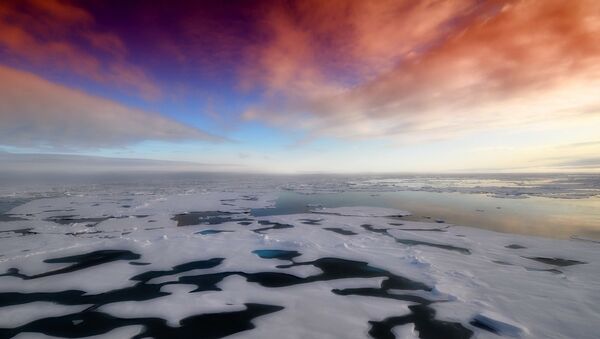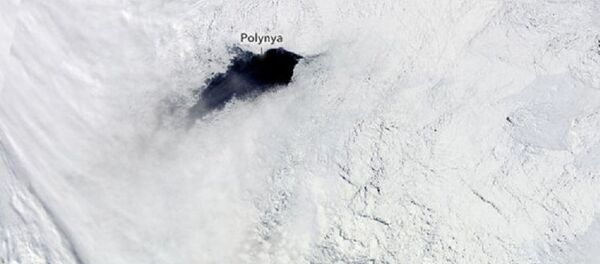Scientists may have finally found an explanation for the enormous holes appearing in the Antarctic winter ice pack since about four decades ago.
With the help of floating robots and tech-equipped seals, they seem to be close to shedding light on the mysterious phenomena, the so-called polynyas (Russian for "open water"), that seem to be the result of storms and salt, new research published on 10 June in the Nature journal says.
Polynyas have been generating growing interest as two gaping large holes formed in the Weddell Sea in 2016 and 2017; in the latter instance, the open waters stretched over 115,097 square miles (298,100 square kilometres), according to an article published in April in the Geophysical Research Letters journal.
After a groundbreaking study of the ocean conditions during polynya formation, it has been revealed that the vast stretches of open water grow due to brief climate variations and spells of particularly bad weather. The polynyas also release a lot of deep-ocean heat into the atmosphere. As to what impact this might have – the scientists are still looking for clues.
“It may modify weather patterns around Antarctica,” said the leader of the study, Ethan Campbell, a doctoral student in oceanography at the University of Washington, speaking with Live Science.
Scientists had suspected prior to the study that storms played a role in the creation of polynyas in recent years.
A paper published in April by atmospheric scientists in the Journal of Geophysical Research: Atmospheres pointed to a particularly violent storm packing wind speeds of up to 72 miles per hour (117 kilometres per hour) in 2017.
However, stormy seas are the norm in the Antarctic winter, Campbell said. “If it were only storms, we'd see polynyas all the time, but we don't,” he said.
In fact, gaping large polynyas are relatively rare, with three huge ones registered in 1974, 1975 and 1976, but nothing significant again until 2016.
The floats drift in currents, collecting water temperature, salinity and carbon content information.
The scientists also used year-round observations from Antarctic research vessels and even scientific seals, as the wild pinnipeds were fitted with minute devices to collect ocean data as animals continue on their habitat routes.
Assembling the data collected, the full picture pertaining to the 2016 and 2017 polynyas became clear.
The first ingredient, said Campbell, was part of a climate pattern called the Southern Annular Mode, the polar version of El Niño, a climate variation that can carry winds either farther from the Antarctic coast, in which case they become weaker, or when nearer to the coast become stronger.
Then the winters of 2016 and 2017 provided the final ingredient, as storms created wind and waves that mixed the water vertically, bringing up warm water from the ocean bottom that melted the sea ice.
However, even with these explanations, the effects of the polynyas that formed are still mysterious.
Researchers found that the interior of the ocean beneath them cooled by 0.36 degrees Fahrenheit (0.2 degrees Celsius). Released heat could possibly alter local weather patterns and even shift winds globally, believes Campbell.
On a more concerning note, the deep ocean water exposed to the atmosphere during a polynya is potentially carbon rich.
If that carbon is released into atmosphere via polynyas, they could contribute slightly to climate change, Campbell claimed.
The new research should help scientists further develop our understanding of Antarctica's changing climate.




